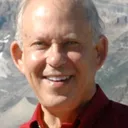Stay in the Loop
BSR publishes on a weekly schedule, with an email newsletter every Wednesday and Thursday morning. There’s no paywall, and subscribing is always free.
A musical journey through the Americas
Dolce Suono Ensemble's 'The Americas Project' at Curtis Institute of Music

There are many challenges to negotiating a successful chamber music concert incorporating diverse genres such as classical, jazz, and so-called “world music.” Few musicians are equally at home with them, and it is difficult for musicians and audiences to continually switch gears. So, it is noteworthy that Philadelphia’s own Dolce Suono Ensemble performed an evening of music of diverse genres, nationalities, and cultures that moved seamlessly and with panache throughout.
The concert featured music of the Americas, and maintained the unity of style and careful articulation that marks the best chamber groups. Director Mimi Stillman’s exuberant commentaries and exquisite flute playing formed the pivot points around which the artists, who hail from diverse backgrounds, infused their personal styles while blending with one another.
Remarkably, many passages were improvised so well it was difficult to tell what was in the score and what was created onstage. Improvisation is a lost art among classical musicians, but there are indications it is coming into vogue again after two centuries when it was considered unfaithful to a composer’s intent.
Pre-Bossa Nova Brazilian song
The concert began with three shorter pieces from Brazil: “Apanhei-te Cavaquinho” by composer Ernesto Nazareth, a lively Choro lament; Djavan's “Flor de Lis"; and legendary Brazilian composer/guitarist Guinga’s “Cheio de Dedos.” Guest vocalist and guitarist Pablo Reyes precisely sustained the Brazilian rhythms, and his soulful singing combined the sentimentality of Latin jazz with the steadiness and discipline of chamber song cycles.
Mike Boone, best known to locals as a jazz bassist, delivered bass lines that could have been composed by Bach or Mozart. Percussionist Gabriel Globus-Hoenich, who chose the compositions and arranged several, successfully negotiated the briar patch between Brazilian syncopation and landing directly on the beat in the classical manner.
Gershwin revisited and reconsidered
George Gershwin’s “Cuban Overture” was his excursion into Latin flavors, but the group performed three of his songs from the Great American Songbook: “Someone to Watch Over Me,” which Stillman rendered with enduring soloistic beauty; “’S Wonderful,” for which pianist Charles Abramovic provided a ragtime lilt; and “Embrace Me (My Sweet Embraceable You),” which Stillman elaborated with extended flute improvisation. The group avoided the temptation to render these as popular songs, instead highlighting Gershwin’s debt and contribution to European classical music. Because these songs are so familiar, we often fail to realize the greatness of some of our pops-jazz-film composers. The chamber format allows us to hear their music with attention to their surprisingly sophisticated melodies and harmonic progressions.
Brubeck a la Française
Parisian jazz pianist and composer Claude Bolling’s Suite for Flute and Jazz Trio is a seven-movement "crossover" composition he recorded with flutist Jean-Pierre Rampal, accompanied by a jazz piano trio. Dolce Suono performed four movements. First, “Baroque and Blue” with the feeling of classical trio style and a touch of the Modern Jazz Quartet. Next, “Sentimentale,” with a melody reminiscent of Villa-Lobos’s Bachianis Braseileras No. 5. Then, “Javanaise,” surprisingly, in 5/4 time, culminating with a quotation from Dave Brubeck’s “Take Five,” where Globus-Hoenich reproduced Brubeck drummer Joe Morello’s polyrhythms. Finally, “Veloce,” which, as its name implies, is a challenge to the flutist, with Stillman more than up to the task.
An arrow in the night
The music moved to North America with the world premiere of Andrea Clearfield’s “Sagitta for Flute and Guitar.” Clearfield, who worked with Stillman on many projects, explained that the title refers to the constellation “Sagitta,” or “arrow,” standing high in the Northern sky, providing an arc-like trajectory; her minimalist composition possessed its own inner form and beauty. The piece transcended boundaries of nationalism and musical expression and was as close to “pure music” as one could hope to hear. An extended harp-like guitar passage, stunningly executed by guest guitarist Gideon Whitehead, almost seemed to transcend instrumentation as well.
Continuing the South and Central American journey
Stillman and Whitehead continued their duet duties with “El Sampedrino,” by prolific Argentinian composer Carlos Guastavino. The song, a national favorite, was written for piano and voice, and this transcription for flute and guitar worked well.
The concert concluded with the entire ensemble convening for three short pieces: “María Lando,” by Susana Baca, a key figure in Afro-Peruvian music who currently serves as Peru’s Minister of Culture; “La Ilorona,” a traditional Mexican song arranged and sung by Reyes, with Stillman playing piccolo; and Vera Cruz composer David Haro’s “Gea.”
Although the Americas Project that inspired and partly funded the concert (and the Diego Rivera painting on its printed brochure) represents outreach to Philadelphia’s Mexican community, Haro was the only Mexican composer represented on the program, despite that country’s history of classical music stretching back to the 17th century. Parenthetically, those who want to build a wall on the Mexican-American border ought to think more about Mexico’s remarkable cultural, intellectual, and literary heritage.
The Dolce Suono Ensemble has in the past decade established itself as a premiere chamber group in Philadelphia and is one of the most fervent in introducing contemporary American and world music to the repertoire. This concert showed their resilience in taking on new forms and instrumentation as well as their interest in reaching out to the diverse cultures that grace our city.
What, When, Where
Dolce Suono Ensemble: "Música en tus Manos" / The Americas Project. Pablo Reyes, voice and guitar; Mimi Stillman, flute; Charles Abramovic, piano; Gideon Whitehead, guitar; Mike Boone, bass; Gabriel Globus-Hoenich, percussion. May 17, 2016 at the Gould Rehearsal Hall, Curtis Institute of Music, 1616 Locust St., Philadelphia. (267) 252-1803 or dolcesuono.com/tickets.
Sign up for our newsletter
All of the week's new articles, all in one place. Sign up for the free weekly BSR newsletters, and don't miss a conversation.

 Victor L. Schermer
Victor L. Schermer